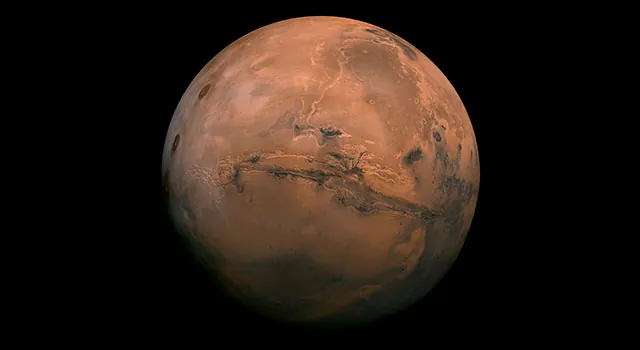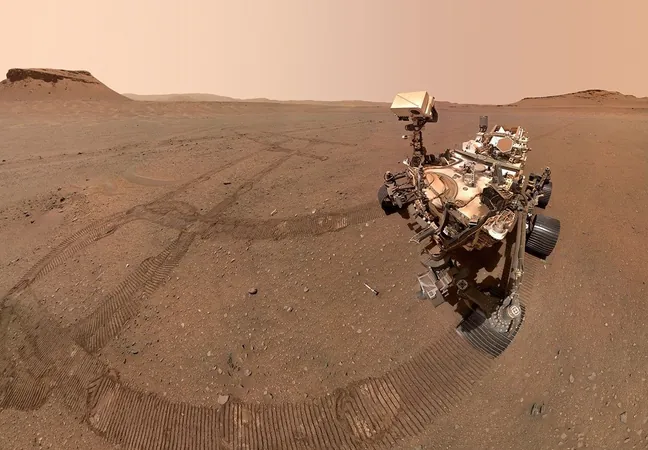
The Revolutionary Approach to Mars Landings: A Glimpse into the Future of Space Exploration
2024-11-18
Author: Michael
Introduction
Prepare to embark on an interplanetary journey as we delve into the cutting-edge techniques that may soon allow us to land human missions and heavy payloads on Mars. Over a decade ago, renowned engineer Rob Manning from NASA's Jet Propulsion Laboratory (JPL) expressed skepticism about the feasibility of reaching and landing humans on the Red Planet. Yet, as we fast forward to 2024, the landscape has dramatically shifted, and Manning now asserts that our chances have significantly improved.
Changes in Perspective
"We’ve made huge progress since 2007," Manning stated in a recent interview. "The challenges we faced back then have evolved, but they are still present." Mars, with its incredibly thin atmosphere—over 100 times less dense than Earth's—poses unique complications that haven't been fully addressed even after years of research and the successful landings of several rovers like Curiosity and Perseverance.
Challenges of Landing on Mars
The sheer size and weight of spacecraft needed for human missions, hovering between 20 to 100 metric tons, complicate matters further. Manning recalls the misconceptions from 2007, where many believed that since we've successfully landed on the Moon, transitioning to Mars should be just as straightforward. However, Mars' atmospheric challenges differ vastly from those found on either the Earth or the Moon.
The Supersonic Transition Problem
During reentry, spacecraft must decelerate from hypersonic speeds—such as the 12,100 mph (19,500 kph) speed achieved by Perseverance—down to a safe landing velocity in mere minutes. The crux of the issue lies in what Manning calls the "Supersonic Transition Problem." Essentially, Mars has a unique velocity-altitude gap that complicates the landing of massive payloads.
Innovative Solutions
The Perseverance rover itself is the heaviest object to land on Mars, weighing around one metric ton. The complex landing maneuvers involve a series of devices and systems, including the innovative Sky Crane. However, with the approach of upcoming human missions expected to arrive faster and heavier than before, experts are diving deeper into solutions.
Retro Propulsion
One groundbreaking concept that has emerged is retro propulsion—using the spacecraft's engines to decelerate while traveling at supersonic velocities. Although this method was considered risky and almost unthinkable back in 2007, advancements in technology and methods by private space firms like SpaceX have opened new avenues for exploration.
Collaboration and Success
In a remarkable series of events, SpaceX managed to successfully perform supersonic retropropulsion maneuvers during tests of their Falcon 9 rocket. The collaboration between NASA and SpaceX, called the NASA Propulsive Descent Technology (PDT) project, paved the way for new insights which highlighted how retro propulsion can create shockwaves that shield the spacecraft from atmospheric stresses, significantly enhancing landing safety.
Staggering Results
The results were staggering. On December 21, 2015, SpaceX achieved the first-ever successful landing of an orbital-class rocket, proving that retropropulsion could effectively decelerate massive payloads, thus altering the course of future Mars missions.
Ongoing Challenges
Yet, even with these breakthroughs, significant hurdles remain. Manning emphasizes the need to understand how to navigate and control large spacecraft through Mars' atmosphere. Questions persist about managing dust storms, debris hazards from powerful engines, and ensuring enough infrastructure is available for initial landings.
Looking Ahead
"It's going to take much longer than people think to get everything squared away," Manning cautions. With the window for launching missions to Mars only opening every 26 months, trial and error will require patience and precise planning. Still, he remains optimistic about the lessons that the next tests will yield.
Conclusion
In essence, humanity is on the brink of unlocking one of our greatest challenges in space exploration. With a blend of innovative technology and collaborative efforts, we are inching closer to realizing the dream of sending humans to Mars. As Manning put it, "We're basically doing what Buck Rogers told us to do back in the 1930s: fire your engines backwards while you’re going really fast." The future of interplanetary exploration has never looked more promising!









 Brasil (PT)
Brasil (PT)
 Canada (EN)
Canada (EN)
 Chile (ES)
Chile (ES)
 España (ES)
España (ES)
 France (FR)
France (FR)
 Hong Kong (EN)
Hong Kong (EN)
 Italia (IT)
Italia (IT)
 日本 (JA)
日本 (JA)
 Magyarország (HU)
Magyarország (HU)
 Norge (NO)
Norge (NO)
 Polska (PL)
Polska (PL)
 Schweiz (DE)
Schweiz (DE)
 Singapore (EN)
Singapore (EN)
 Sverige (SV)
Sverige (SV)
 Suomi (FI)
Suomi (FI)
 Türkiye (TR)
Türkiye (TR)